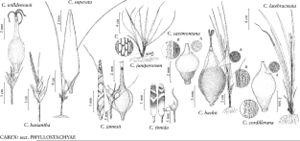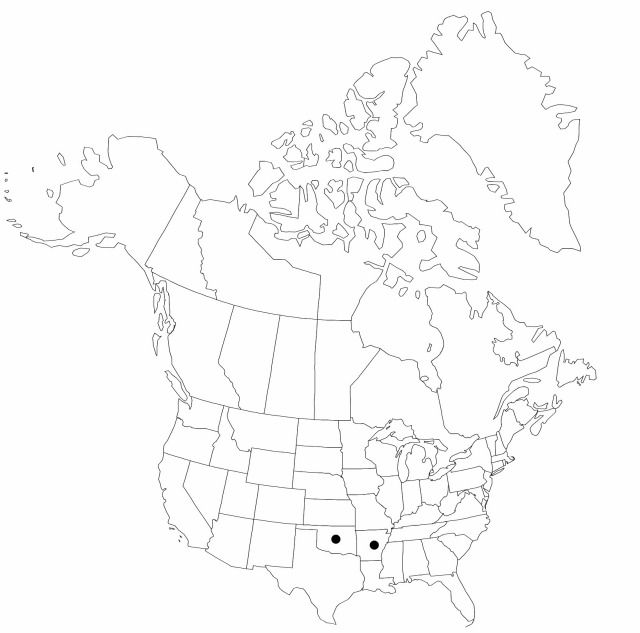Carex latebracteata
Rhodora 56: 23. 1954.
Culms 17–31 cm. Leaves: basal sheaths pale brown to orange-brown; blades pale green, conspicuously glaucous, widest leaves (4.1–)6–15 mm wide, equaling stems, coriaceous, margins hyaline, white, scabrous. Terminal spikes with staminate portion 2–5-flowered, 3.2–4 × 1.1–2.8 mm; pistillate portion 3–14-flowered. Lateral spikes 0. Pistillate scales green; proximal scales with apex acuminate; distal scales ovate, apex obtuse. Staminate scales green, ovate, 2.5–3.4 × 0.9–1.5 mm, margins connate at base, enfolding scales above, hyaline, white, apex obtuse. Anthers 1.6–2.2 mm. Perigynia tightly enveloping achenes, pale green, ellipsoid, 6.7–7.9 × 2–2.7 mm, apex abruptly contracted into beak; beak 2.7–4 mm, smooth. Achenes brown, obovoid to obpyriform, 2.8–3 × 2–2.5 mm. Stigmas clavate, convolute, minutely papillose. 2n = 98.
Phenology: Fruiting spring (late Apr–late May).
Habitat: Steep, shaded slopes in rich, mesic to dry-mesic hardwood forests
Discussion
Carex latebracteata is endemic to the Ouachita Mountains of Arkansas and Oklahoma.
Selected References
None.

